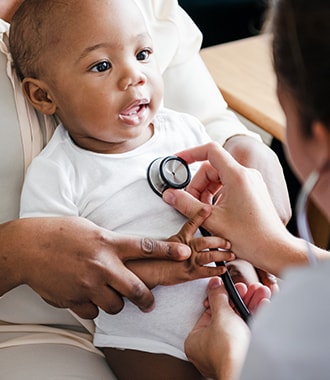Health
What to do if you can’t find children’s Tylenol or Motrin
By Christina Varvatsis, PharmD, BCPS Jan 05, 2023 • 5 min
Respiratory viruses are hitting kids hard this year, especially the flu, COVID-19 and RSV. Parents face an added challenge: bare shelves for some of the most common children’s medications to lower fevers, including acetaminophen (Tylenol) and ibuprofen (Motrin or Advil).
Consider these tips if you’re struggling to find medicine for your child:
1. Try chewables or tablets
Liquid products might be your normal go-to, but depending on your child’s age and weight, they may be able to take a different form of your trusted medication.
· For children who are at least 2 years old, try the chewable version.
· Starting around ages 6–8, children may be able to take certain junior strength or regular strength adult tablets.
· Review the charts below to find the proper dose of various product types based on your child’s age and weight. Be sure to talk with your pharmacist or pediatrician if you have any questions about dosing or choosing the right product.
· Trouble swallowing pills? You may be able to crush certain products, but always ask your pharmacist first.
2. Look for generics
We all have our preferred brands, but when it comes to medication, generics contain the exact same active ingredients. Acetaminophen is acetaminophen, whether it’s in a Tylenol-branded bottle or not, so you should feel comfortable purchasing whichever brand you can find.
3. Combination cough & cold products aren’t always the best substitute
Acetaminophen and ibuprofen are included in many over-the-counter combination cough, cold & flu preparations. But these products contain additional medicines that your child may not need. Only consider combination products if your child is experiencing symptoms that these additional medicines would help. And talk with your pharmacist or pediatrician first, since some ingredients may not be safe for younger children.
Navigating shortages can be challenging, especially when caring for a sick child. Ask your Walgreens pharmacist if you have any questions about choosing the right relief product or dosing. You can also use the Pharmacy Chat feature in our app 24/7.
Acetaminophen dosing table for fever and pain in children
Weight |
Age | Infants’ drops (160 mg/5 mL) |
Children’s liquid (160 mg/5 mL) |
Children’s chewables (160 mg) |
Children’s packets (160 mg) |
Adults’ tablets (325 mg) |
Adults’ tablets (500 mg) |
6–11 lbs. |
0–3 months |
1.25 mL |
|
|
|
|
|
12–17 lbs.
|
4–11 months |
2.5 mL |
|
|
|
|
|
18–23 lbs. |
12–23 months |
3.75 mL |
|
|
|
|
|
24–35 lbs. |
2–3 years |
|
5 mL |
|
|
|
|
36–47 lbs. |
4–5 years |
|
7.5 mL |
1.5 tablets |
|
|
|
48–59 lbs. |
6–8 years |
|
10 mL |
2 tablets |
2 packets |
1 tablet |
|
60–71 lbs. |
9–10 years |
|
12.5 mL |
2.5 tablets |
2 packets |
1 tablet |
|
72–95 lbs. |
11 years |
|
15 mL |
3 tablets |
3 packets |
1.5 tablets |
2 tablets |
96 lbs. or more |
12 or older |
|
20 mL |
4 tablets |
|
2 tablets |
1 tablet |
Ibuprofen dosing table for fever and pain in children
Weight |
Age | Infants’ drops (50 mg/1.25 mL) |
Children’s liquid (100 mg/5 mL) |
Children’s chewable tablets (50 mg) |
Junior strength tablets (100 mg) |
Adults’ tablets (200 mg) |
0–11 lbs. |
0–5 months |
|
|
|
|
|
12–17 lbs.
|
6–11 months |
1.25 mL |
2.5 mL |
|
|
|
18–23 lbs. |
12–23 months |
1.875 mL |
4 mL |
|
|
|
24–35 lbs. |
2–3 years |
2.5 mL |
5 mL |
2 tablets |
|
|
36–47 lbs. |
4–5 years |
3.75 mL |
7.5 mL |
3 tablets |
|
|
48–59 lbs. |
6–8 years |
5 mL |
10 mL |
4 tablets |
2 tablets |
1 tablet |
60–71 lbs. |
9–10 years |
|
12.5 mL |
5 tablets |
2.5 tablets |
1 tablet |
72–95 lbs. |
11 years |
|
15 mL |
6 tablets |
3 tablets |
1.5 tablet |
96 lbs. or more |
12 or older |
|
20 mL |
8 tablets |
4 tablets |
2 tablets |
Published January 2023.




